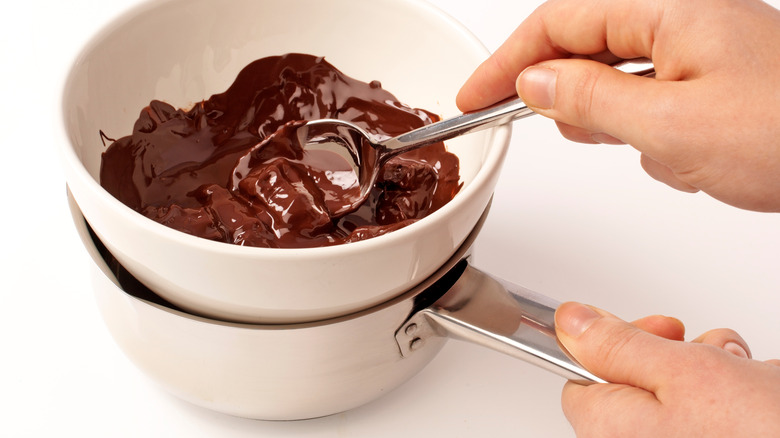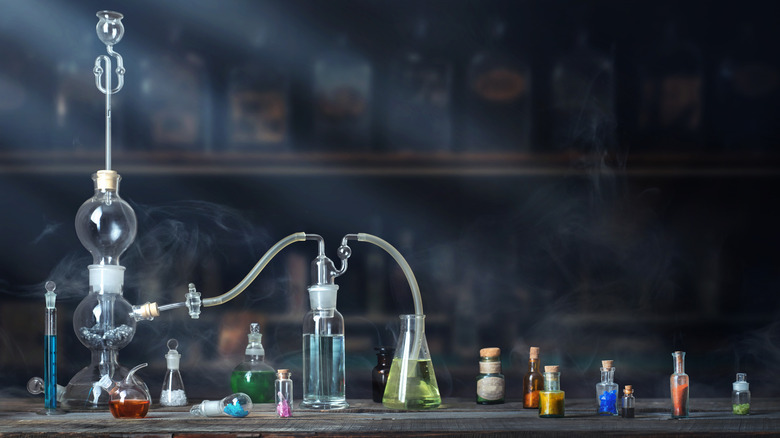The Alchemical Origins Of The Bain-Marie
If you have ever tempered chocolate in a bain-marie, you've used an ancient tool from the alchemist tradition. Cooking can sometimes feel like alchemy, or the ancient practice of transforming matter — specifically, attempts to turn base metals to gold (via Scientific American). From the magic of spinning egg yolks and butter into hollandaise to turning powders and water into the expansive flesh of bread, cooking — like alchemy — is truly transformative and is oftentimes referred to as a science, given a recipe's need for precision.
Cherry Gilchrist, author of several books on alchemy, supports the idea of cooking as a sister discipline. Gilchrist wrote, "Like alchemy, it is both art and science – it requires attention and ingenuity, as well as knowledge and skill. Cookery is magical, creative and indeed [an] unpredictable process as it endeavors to turn raw ingredients into an appealing and attractive finished dish."
With these ideas in mind, it's not surprising some of the implements we use today in our modern kitchens may have begun in the practice of alchemy, the predecessor of modern chemistry. Take the bain-marie, or the bath of Mary, for example. This heated water bath is used in both science and cooking. But who exactly is the Mary in the name bain-marie and what are its alchemical origins?
How bain-marie got its name
According to ThoughtCo., bain-marie got its name from Maria the Prophetess, also known as Mary the Jewess. She is said to have lived between the first and third centuries and is believed to be the first known Western alchemist. Though none of her writings remain, she is often cited by the fourth-century alchemist Zosimos of Panopolis, and she is universally credited with the inventions of the bain-marie and several other alchemical processes and equipment, including the distillation apparatus known as a tribikos, per Chemistry World. According to SciHi Blog, some consider the tribikos to be a prototype for the modern-day pressure cooker.
As for the bain-marie, this heated bath named after its inventor is an invaluable tool in cooking. As MasterClass explains, a bain-marie — which involves placing a smaller container (with ingredients) over or inside a larger container containing hot water — allows for the creation of sauces like hollandaise, tempered chocolate, and according to Cook's Illustrated, perfectly smooth custard. As Mary the Jewess must have used in her alchemical experiments, the heated water bath serves as a double-boiler, one that gently heats items like chocolate or custard at a controlled temperature (via Wasserstrom).

